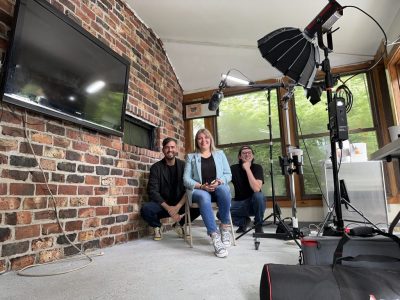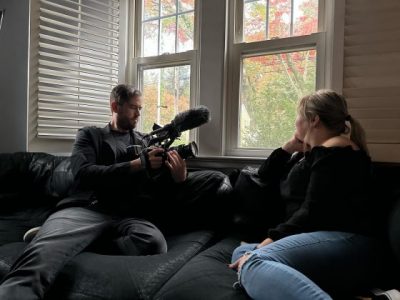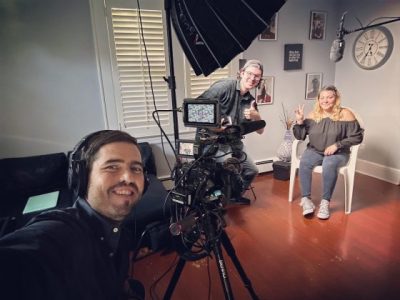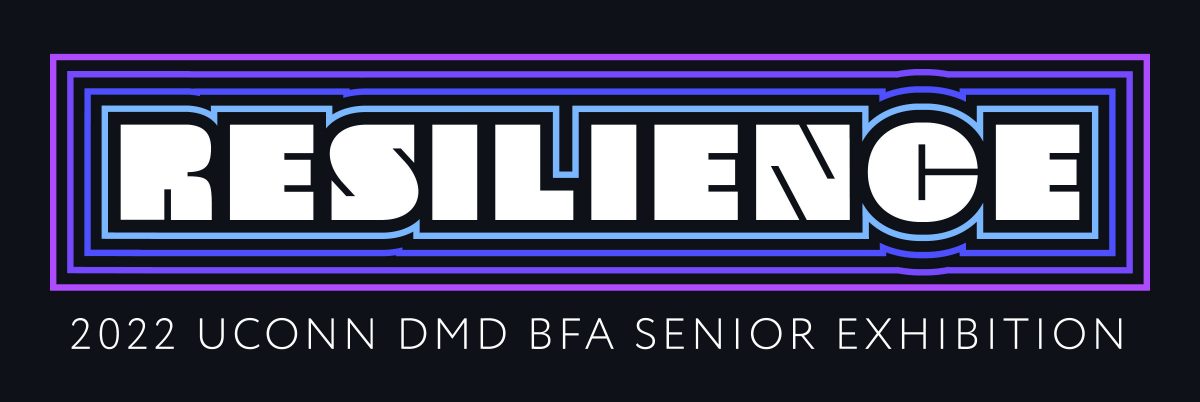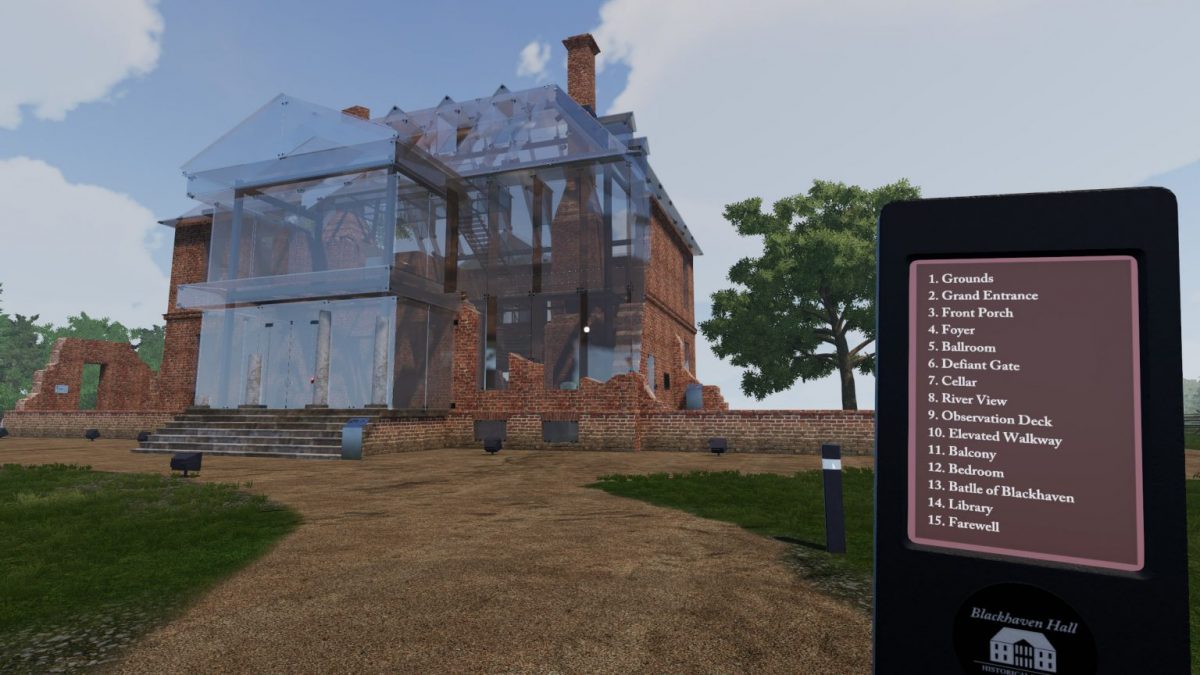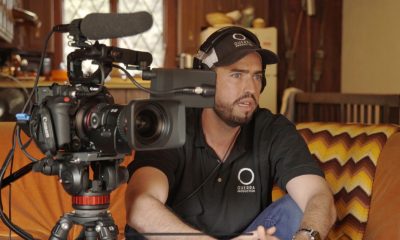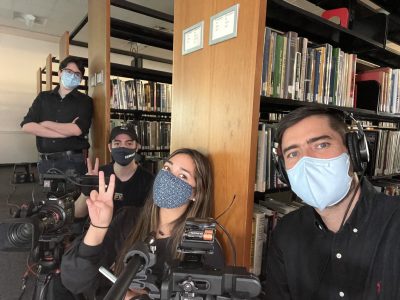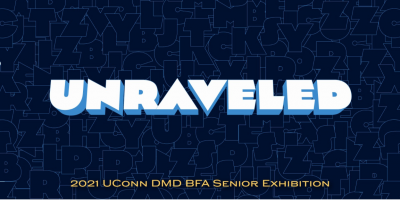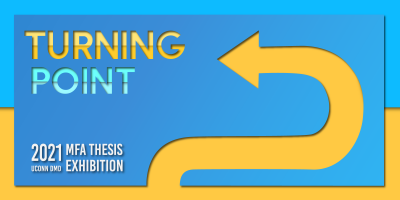January 22, 2024 | Kimberly Phillips
‘I am a physical storyteller. I really like to tell stories nonverbally because it creates a universal language’
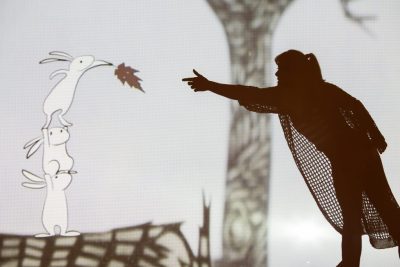
‘America’s Got Talent’ Alum, Soon-to-Be UConn Grad Marries Aerial Acrobatics, Animation
Abigail Baird ’24 MFA may have Radio City Music Hall on her resume, but an upcoming appearance at the Harriet S. Jorgensen Theatre might just be the performance of a lifetime.
It’s the place where the show she’s had in her head for a decade and performed in bits on “America’s Got Talent” and “The Incredible Talent of France” will come to fruition in its entirety – even if she says it’s still a work in progress.
Baird says she designed “Nothing Really Matters” as a portable production and, yes, her 20-foot-tall rig for aerial acrobatics travels with her. That’s right: Baird is an aerialist who’s mastered and taught the skill of mid-air acrobatics.
Over the last 24 years, the Texas native has gone from circus school in Vermont to puppet school in Connecticut and traveled the world in between.
“I am a physical storyteller. I really like to tell stories nonverbally because it creates a universal language that can be understood among different audiences,” Baird, who also once trained as a mime, says.
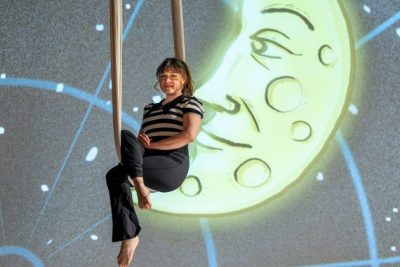
Whether through hand-to-hand acrobatics with a partner or with the help of an aerial fabric sling held up by a four-legged pyramid rig, Baird uses movement to convey experiences, thoughts, and moods.
In “Nothing Really Matters,” she adds a backdrop of animation and puppets to the mix to ride a horse, get chased by a bear, fall off a cliff, and get shot out of a cannon, all while staying suspended mid-air in a sling.
That’s what’s fun about the show, she says, staying in the same place in the center of the stage yet traveling so far.
“I call it a one-woman show, but not a one-woman production,” Baird says. “I have a whole team of graduate and undergraduate students working on the show with me – animators, puppet arts students, lighting design students. This show really wouldn’t have been possible without their creativity and insights. I wouldn’t have been able to do this completely on my own.”
With support from Alison Paul, an associate professor of illustration/animation in the art and art history department, and Anna Lindemann, an assistant professor of motion design and animation in digital media & design, Baird’s show marries the varied departments in the School of Fine Arts.
“Animation has the power to transform time and space,” she says. “You can be miniature or giant. You can go into outer space. You can be one thing that suddenly becomes something else. But puppets breathe and they have life, and that life essence that relates to human movement is what makes them incredible storytellers.”
The convergence of animation and puppetry has been the focus of her UConn studies the last three years under Bart Roccoberton Jr., professor and director of the dramatic arts department’s puppet arts program, and John Bell, associate professor and director of the Ballard Institute and Museum of Puppetry.
‘I can still remember hearing the applause’
But before that, in 2008, Baird started the company Aerial Animation pairing her physical skills with animations from a cartoonist friend who together came into their own as artists, she says, starting with simple line drawings and basic aerial acrobatics skills and progressing to what audiences saw in 2014 on “America’s Got Talent” and in 2017 on “The Incredible Talent of France.”
She made it to the semifinals – the next-to-last round – in both programs. With each performance, she and a growing group of animators created a piece of the full “Nothing Really Matters,” building on what had been previously done and, in the end, giving her large sections of the full show.
“I can still remember hearing the applause and rush of what it sounds like to hear 6,000 people clapping all at the same time,” Baird says. “I am so grateful for those experiences. They propelled my career and solidified my artistic voice. That was the first real maturity of my work. I toured the world afterward with those organizations and performed in Dubai, London, and Las Vegas.”
But she wanted to refocus on her art instead of entertainment.
“I’ve always wanted to be able to create my own stories and my own drawings,” she explains. “But animation is very expensive, and in order to be able to tell all the stories I want to tell, I knew I needed to have some of those skillsets of my own. So, by coming back to school, studying puppetry, and dipping my toe in the DMD and art departments here at UConn, I was able to access the resources I needed.”
Her equipment has overtaken the Harriet S. Jorgensen Theatre – in the back of the main Jorgensen stage – since mid-August, while she’s worked on the animations and shadow box and toy theater puppets for the show, which will be performed Jan. 26 and 27.
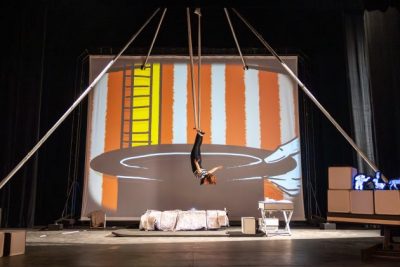
Ironically, the physically demanding “Nothing Really Matters,” funded with a Puppeteers of America Margo and Rufus Rose Endowment Grant, centers on sleep and rest, the body’s reliance for it, and one woman’s self-shaming need for it, Baird says.
“In our society, most of us have an internal struggle with our need for rest. People will say, ‘what are you up to,’ ‘what are you doing next,’ ‘what’s happening for you,’ and no one ever admits, ‘Oh, I just watched Netflix all day and it was great. I feel so much better today.’
“It’s an internal conflict we all have,” she continues. “Admitting that rest is part of our hero journey is hard for us even though it’s part of our ability to thrive. Success comes with moments of pause and reflection, and in that stillness new information comes that wouldn’t otherwise.”
She says it’s a topic adults can relate to and a show that’s exhilarating for children, making it ideal for any mix of audience members. After all, who wouldn’t want to see a bed do double-duty as a monster?
Perhaps some of the most beautiful and serene parts of the show are Baird walking through a stop-motion animation forest. It’s created using a technique that gives one-dimensional paper trees and leaves the illusion of depth.
Laser cut in a variety of colors, the trees change from season to season as she walks along. It’s an example, she says, of the synthesis of puppets and animation – the inanimate paper being manipulated to give it life as it scrolls across a screen.
She also has included in the show live-cued animation, just like sound effects or light changes layered into a narrative. Another area downstage near the audience shows off a smaller, second set of projections, these seemingly two-dimensional, or what she calls 2.5-dimensional.
“I would really like to see moving images and animation become part of university theater experiences alongside lights and sounds. It’s happening more and more on Broadway, and I think UConn is ready for it,” Baird says.
She is too.
“I always knew this is what I was going to do, but it’s been an evolution and I really believe that theater is a collaborative art form,” she says. “Allowing myself to be influenced by the opportunities that have been presented to me over the last two decades is what got me to where I am.”
“Nothing Really Matters” will be performed Friday, Jan. 26, at 8 p.m. and Saturday, Jan. 27, at 2 p.m. at the Harriet S. Jorgensen Theatre. Tickets are free and can be obtained online. It’s one of eight shows in “RojoFest: The Jerry Rojo Festival of Original Student Work,” co-sponsored by the Ballard Institute and Museum of Puppetry and Connecticut Repertory Theatre. The festival runs Jan. 25-28 in multiple locations around campus. A list of shows and free tickets to performances are available online.
UConn Today Article: https://today.uconn.edu/2024/01/americas-got-talent-alum-soon-to-be-uconn-grad-marries-aerial-acrobatics-animation/
